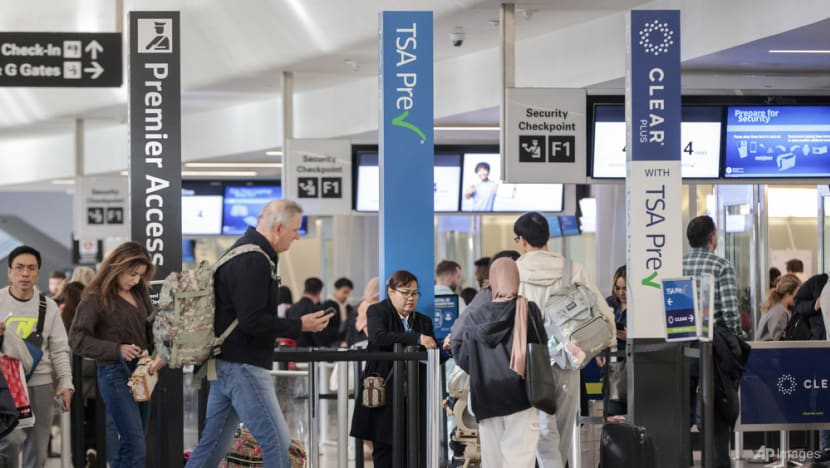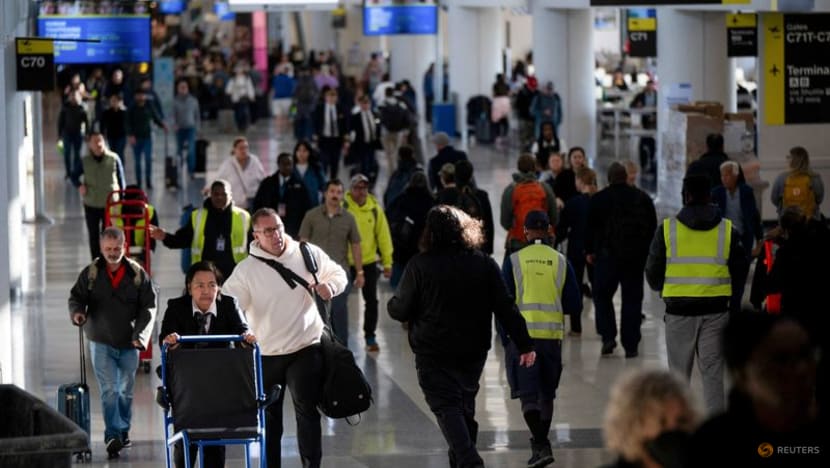Commentary: What Singapore travellers should know about clearing US immigration
The number of foreign visitors to the US has fallen amid reports of travellers being detained at borders. Here’s how trips to America can be less stressful, says The MileLion’s Aaron Wong.


This audio is generated by an AI tool.
SINGAPORE: My visit to the United States in early April was rather remarkable, on account of how unremarkable it was.
With the surge in reports of visitors being detained at the border for seemingly minor infractions, and numerous countries issuing travel advisories for the United States, some consternation would be understandable.
Family members urged me to postpone my trip, friends joked “Nice knowing you,” and there was an overwhelming sense that visiting the US under current circumstances was unwise.
But on arrival at San Francisco International Airport, I spent more time waiting for my bag than I did clearing immigration. While I could certainly sense the anxiety among my fellow travellers, for me it was a non-event.
Of course, my anecdotal experience does not prove or disprove anything, and given the current political climate, it’s safe to say that travelling to the US now is unlike any point in history. The number of foreign visitors to the US fell by almost 12 per cent year-on-year in March, and Oxford Economics is projecting a 9.4 per cent decline in arrivals for 2025.
If you’re planning a trip to the US, here are a few things that could make it less stressful.

WHAT TO DO BEFORE DEPARTURE
Singaporeans do not need a visa to visit the US for business or leisure, but they must apply for an Electronic System for Travel Authorisation (ESTA). An ESTA costs US$21 and is valid for multiple entries over two years or until one’s passport expires, whichever comes first.
While most of the application questions are straightforward, concerns often arise around the Social Media section, where applicants are asked to provide their usernames on Facebook, LinkedIn and other platforms for vetting purposes.
This is not a new requirement, having been introduced under the Obama administration in 2016, and completing it is optional. In my personal experience, skipping the Social Media section has not led to any issues with approval.
When packing, it is important to bring documents that support your purpose of travel. If you are travelling for leisure, have your hotel bookings, rental car confirmations and return flight tickets handy as evidence.
Business travellers should be prepared to show proof of full-time employment outside of the US, which can come in the form of a HR letter. Do not bring resumes, academic transcripts or other materials which could give the impression that you are looking for a job in the US.
Inspect your digital footprint to ensure there is no information that could be misconstrued. According to a New York Times report, something as innocuous as an “Open to Work” status on LinkedIn could be used as proof that you intend to seek employment in the United States.
WHAT TO EXPECT ON ARRIVAL
An ESTA does not guarantee entry into the United States – Customs and Border Protection (CBP) officers at the port of entry make the final call.
CBP officers are trained to assess whether travellers intend to overstay, and it is normal for them to ask about your ties to your home country. Common questions include the purpose of your visit, intended stay duration, who you know in the US and what your job is back home.
The questions may feel invasive, but the best course of action is to answer truthfully, in as few words as possible. CBP officers are not known for having the best sense of humour, regardless of administration, and they have wide discretion.
A confrontational or dismissive attitude can escalate a routine interview into a more serious issue. If English is not your first language, you can request for a translator to ensure your responses are not misunderstood.
One common pitfall is using the terms “work” and “business” interchangeably. While it may seem quite natural to say “I’m here for work” when on a business trip, doing so may raise red flags.
“Business” refers to short-term activities that do not involve gainful US employment, such as attending meetings or conferences, negotiating contracts, meeting clients or suppliers, and exploring investment opportunities.
“Work”, on the other hand, refers to performing services for a US company or client. Digital nomads need to be especially careful, as conducting remote work in the US, even for a non-US based client, may be treated as unauthorised employment and land you in trouble.
If a CBP officer has reason to suspect you are not being truthful, you may be flagged for secondary screening. If this happens, remain calm. Secondary screening does not automatically mean your entry will be rejected, though you will have to answer additional questions or provide more supporting documentation.
PROGRAMMES THAT EXPEDITE IMMIGRATION CLEARANCE
One reason I felt more comfortable travelling to the United States was the fact I had Global Entry, a programme that allows pre-approved, low-risk travellers to enjoy expedited immigration clearance.
Singaporeans have been eligible for Global Entry since 2016. Application requires a US$120 fee and an interview, and if approved, membership is valid for five years.
On arrival, Global Entry members clear immigration at an electronic kiosk, minimising the need to interact with a CPB official. However, CPB officials reserve the right to question all visitors. Global Entry also does not overwrite other entry requirements - for instance, if you intend to work in the US, the relevant visa is required.
Alternatively, the Preclearance programme allows passengers to complete US immigration and customs screening at the airport of departure, rather than upon arrival. Flights then land in the US as domestic flights, with no further immigration or customs checks.
The main advantage is peace of mind – passengers know before boarding whether they have been cleared for entry into the US. If entry is denied, travellers remain outside US territory, removing the risk of being sent to an immigration detention centre.
Currently, US Preclearance is available at 15 airports across Canada, the Caribbean, Ireland and the United Arab Emirates. For travellers from Singapore, the most natural transit point would be the Preclearance location in Abu Dhabi, when flying with Etihad Airways.
STILL WORTH THE VISIT?
With all the heightened scrutiny and horror stories, many may wonder whether a visit to “Fortress America” is still worth it.
There’s no denying that a trip to the US now requires a greater degree of preparation and situational awareness. But it’s also true that the typical visitor still clears immigration without incident, and the experience is largely routine, if not exactly welcoming.
Of course, there are many other destinations that Singaporeans can visit which don’t involve quite the same degree of stress. If that’s what you’re after, then it might be time to explore them.
Aaron Wong is the founder of travel website The MileLion.


















